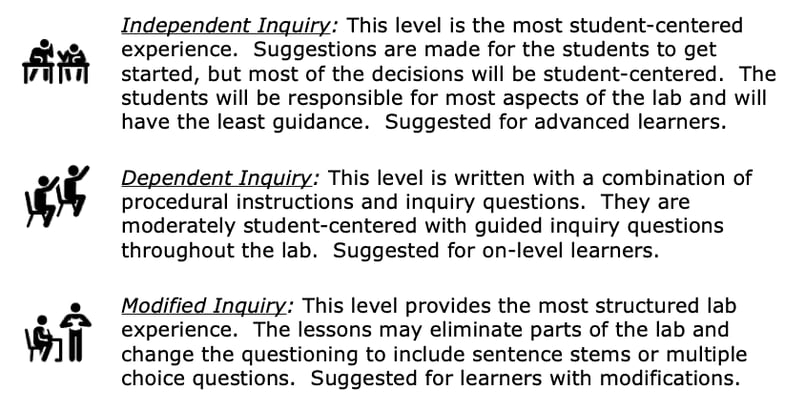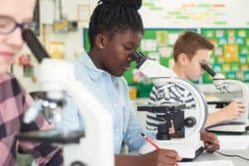Newton's Second Law Inquiry Lab
Middle School Inquiry Lab on Newton's Second Law
In this lab students will apply varying amounts of force to a golf ball and measure the distance the ball travels as a result, in order to understand the relationship between force and acceleration. They will also apply the same amount of force to both a golf ball and a ping pong ball to explore the relationship between mass and acceleration.
Each inquiry lab will contain an essential question that will drive the lesson and make students think. For this lesson, the essential question is:
- How do mass and force affect the acceleration of an object?
BACKGROUND INFORMATION AND MATERIALS LIST:
Students will begin the lab by reading the essential question and background information. This can be done individually, as lab groups, or as a whole class. If you consider lab groups, you also might include some type of whole class formative checks before digging into the lab.

Materials List:
- golf ball
- ping pong ball
- tape
- ruler
- index card
- meterstick
PROCEDURE:
This is a two-part lab. For the first part, students will use a ruler to hit a golf ball and a ping pong ball. Pulling the ruler back 4 cm, students will measure the distance each ball travels and record their data.
Then students will use the same ruler and hit the golf ball and ping pong ball again. Students measure the distances the ball travels when it is hit when the ruler is pulled back 2, 4, 6, and 8 cm.
You may want to practice the lab setup ahead of time, to ensure that the rulers have enough flexibility to bend back the required distances without breaking. You can adjust the measurements in the procedure to accommodate whatever makes sense given the rulers you have on hand.
CHECK FOR UNDERSTANDING:
At this point in the lab, students will be checked for understanding by answering questions about their findings. Here are a few that come with the lab:
- In order to accelerate the ball at a rate of 8 m/s/s, how much force would you need to apply when you kick the ball?
- Describe the results of your experiment for Part 1. What do your results tell you about the relationship between mass and acceleration?
- Describe your results for Part 2. What do your results tell you about the relationship between mass and acceleration?
CONCLUSION
Students will go back to the essential question and write a CER (Claim, Evidence, Reasoning) to conclude the lab. Once completed, students will reflect back on their learning by answering the following questions:
- A surfer with a mass of 50 kg is being pushed forward by a wave with a force of 75 Newtons. What is her acceleration?
- You and your friend are having a shopping cart race down the freezer aisle of the market. Your cart is full, and your friend’s cart is empty. How might Newton’s second law apply to this scenario? Who will win, and why?
MODIFIED AND INDEPENDENT INQUIRY VERSIONS
All of the Kesler Science inquiry labs come with three different modification levels. Each lab is differentiated using the icons below.
STANDARDS ALIGNMENT
TEKS: 8.6C – Investigate and describe applications of Newton’s three laws of motion, such as in vehicle restraints, sports activities, amusement park rides, Earth’s tectonic activities, and rocket launches.
NGSS: MS PS2-2 – Plan an investigation to provide evidence that the change in an object’s motion depends on the sum of the forces on the object and mass of the object.

Download Over $100 in FREE Resources
For Middle School Science
Simply create a login below and gain immediate access to a selection of our Kesler Science product line worth $100 - for FREE. There's a full version of every product type! You'll also join tens of thousands of middle school science teachers who receive timely tips and strategies straight to their inbox.





